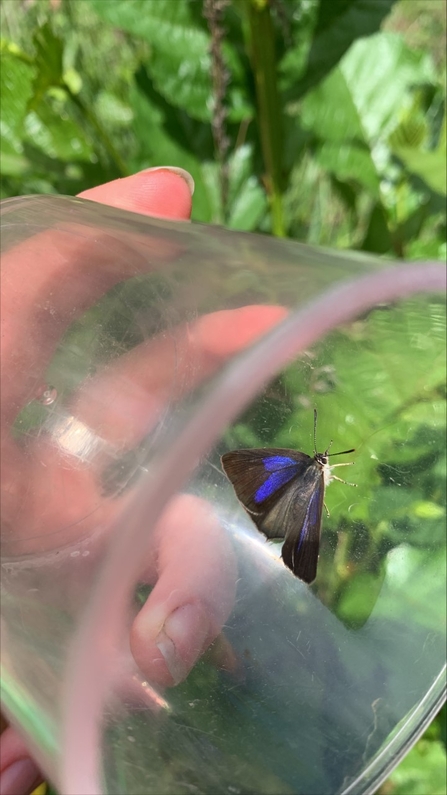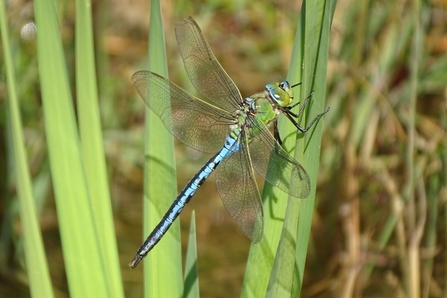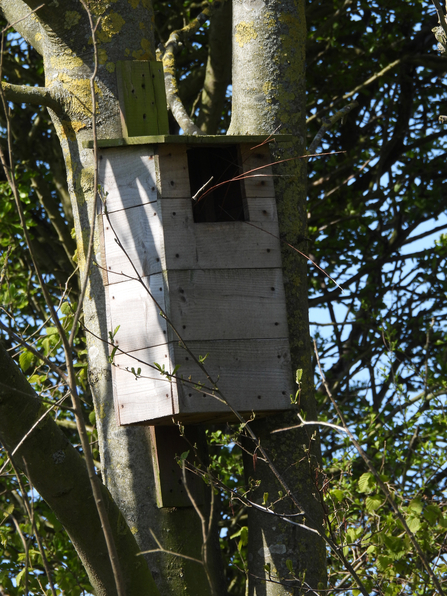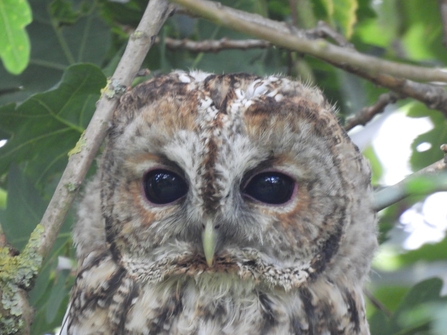As part of the reserve’s Catch My Drift project, five volunteers spent three days surveying the site for butterflies.
Wildlife sightings cause flurry of excitement

Purple hairstreak butterfly. Image by: Sophie Webster.
The former East Chevington Opencast Coal Site was passed on to the wildlife charity in 2003 and now contains lakes, ponds, reed beds, woodland, pasture and arable land, many of which are home to butterflies such as speckled wood, comma, small skipper and red admiral.
However, one eagle eyed volunteer spotted a rare purple hairstreak butterfly next to one of the reserve’s footpaths.
The butterfly relies entirely on the oak tree to survive, using it as a food source, home and place to lay eggs. It is mostly found in oak woods across southern England and Wales, with scattered colonies further north, but are not massively recorded in this region. The reserve has semi mature oak trees, so it is likely it is living in one of them.
On the same day, an emperor dragonfly, previously unrecorded on the East Chevington reserve, was spotted and photographed by member of the public Dave Purnell.

Male emperor dragonfly. Image by Dave Purnell.
This particular breed of dragonfly is a great colonizer of ponds and was found in a pond created by Catch My Drift project volunteers - great news for the National Lottery Heritage Fund backed project which is working to improve habitats and species numbers on the 185-hectare site.
Elsewhere at Druridge Bay, there was a flutter of excitement on the wildlife charity’s Hauxley reserve this weekend when a pair of juvenile tawny owls were spotted perching in the woodland trees.

Taken over tawny owl box at Hauxley. Image by: Alex Lister.
After a red squirrel moved itself into the tawny owl nest boxes at the end of April and barricaded the doorway with sticks to stop the rightful resident from getting back in, staff on the reserve resigned themselves to the prospect of young Tawny owls not appearing this year.
But, as with all good romance films, love has obviously found a way, with the adult owls outwitting the imposter and finding somewhere else to breed on the reserve.
Tawny owls prefer more mature trees so it is hoped that, as the reserve’s woodland starts to mature, they will become a regular sighting.
It isn’t the first time owls have caused a stir on the reserve. During summer 2021, a pair of tawny owls and their three half grown chicks (owlets) took up residence in the playground resulting in it being closed to the public and in 2012, barn owls nested in the previous arson hit visitor centre building and stopping demolition.

Tawny owl. Image by: Duncan Hutt.
Speaking about the sightings, Alex Lister, Northumberland Wildlife Trust’s Druridge Bay Landscape Manager says: “It’s great! There’s never a dull moment at Druridge Bay - from a squirrel taking over a nest box and another taking a look inside the building in the morning to tawny owls taking over the playground, turf wars with crows and now a rare butterfly and dragonfly being found at East Chevington - who says wildlife isn’t great?
“Better still, access to our reserves if free so if you’re watching your cash this summer, come and see what you can spot for yourself.”
